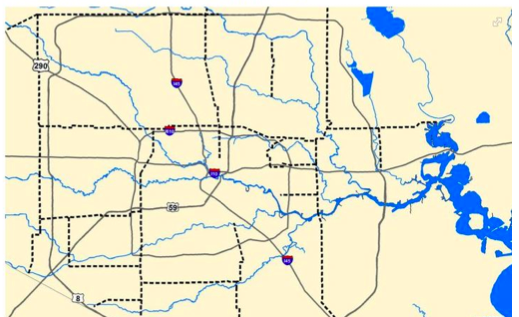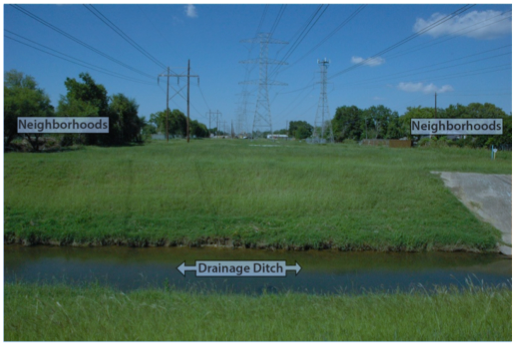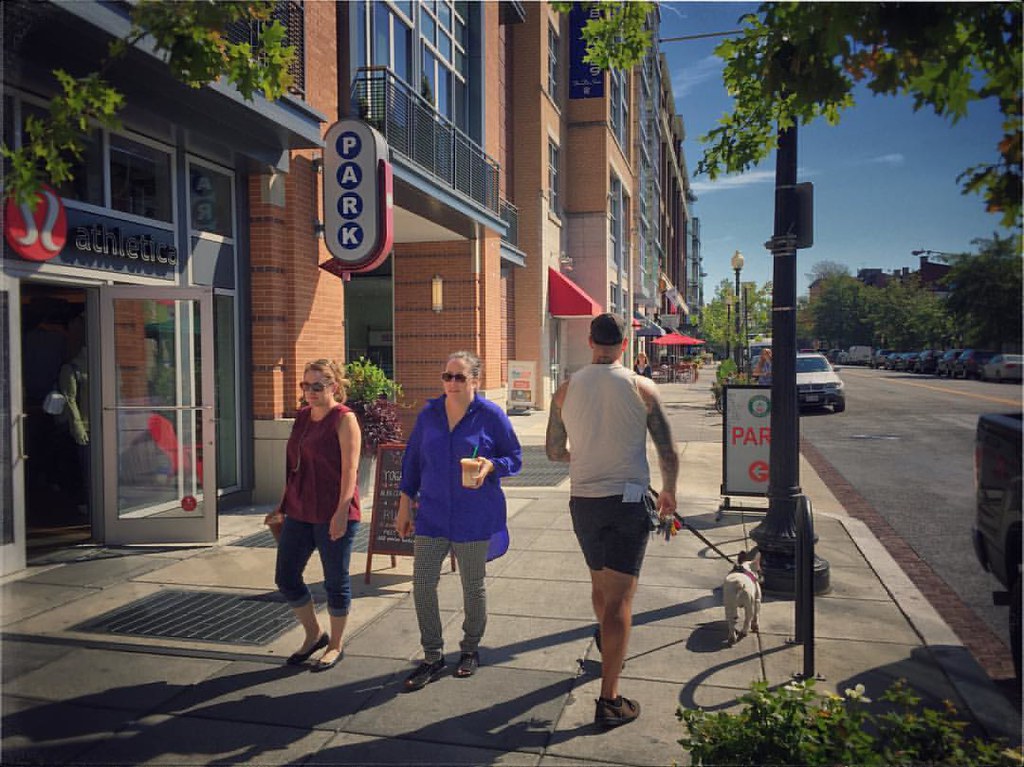
This post is part of a series featuring stories and research that will be presented at the Pro-Walk/Pro-Bike/Pro-Place conference September 8-11 in Pittsburgh.
Long lanes of grass alongside power lines are almost as ubiquitous in Houston as highways. There are roughly 500 miles of high-voltage utility rights-of-way criss-crossing the city, and they're mostly just dead spaces, forming weedy barriers between neighborhoods.
What could the city do if it repurposed these underused spaces? Inspired by an article in Rice University's Cite Magazine, Alyson Fletcher decided to write her master's thesis at the Cornell University landscape architecture program on that question. She drafted a proposal to turn these linear, grassy areas into a "recreational super-highway" -- and it's starting to look like a real possibility.
In May, the city inked an agreement with CenterPoint Energy, owner of some 500 miles of utility rights-of-way across Houston. The agreement provides the city with free access to these spaces, some 140 of which are high-voltage lines with very tall towers and wide rights of way, which are well suited for trails.
For years, city and state leaders had struggled to overcome liability concerns on the part of the energy provider. Who would be responsible if someone was injured? CenterPoint didn't want to be that party. So Texas lawmakers got together last year and passed a law resolving the liability issue for CenterPoint.
Designers at Rice University, the University of Houston, and SWA Design Group estimate the project could cost about $100 million to complete. Community activist Michael Skelly has been leading tours of the utility areas for people who want to learn more about the proposal.
Besides the low cost of land acquisition, the project has another important selling point: It complements the Bayou Greenways plan. As we reported last week, Houston plans to add 300 miles of trails and 4,000 acres of parkland along its 10 major natural bayous. But since most of the bayous are oriented east-west, the plan has limitations from a transportation standpoint.

Many of the utility rights-of-way, meanwhile, run from north to south. Developing trails along both the bayous and the utility lines would form a grid accessible to large sections of the city.
Tom McCasland, director of the Harris County Housing Authority, told the Houston Chronicle that the plan had the potential to change the way people get around the city. At the same time, he acknowledged that it won't change the status quo on Houston's car-centric major streets.
"What is so important about this is (that) these, along with the bayous, will serve as our bicycle interstates," he said. "For those people who don't want us out on the busy roads, this is the answer. Let us ride these, and then we'll jump to the side roads to get to our final destinations."
Most of the utility rights-of-way have design obstacles -- road crossings, railroad crossings, or ditches -- and overcoming them will take some investment in physical infrastructure, said Fletcher, who has completed her thesis and is now a consultant with NelsonNygaard.
But there are also some challenges that come with creating trails under high-voltage power lines. For one, CenterPoint insists these areas be free of trees. So supplying shade will be an important design element to make the paths comfortable in sultry Houston. There's also some risk people could be exposed to slight electromagnetic or static shocks -- so the trails will have to be designed to be as far from the power lines as possible.
Still, it looks like Houston leaders think those obstacles are surmountable. CenterPoint has committed $1.5 million toward the trails. This spring, the Chronicle announced that the first two segments will be built on a site near the University of Houston and near the Sims Bayou on the southwest side of the city.





